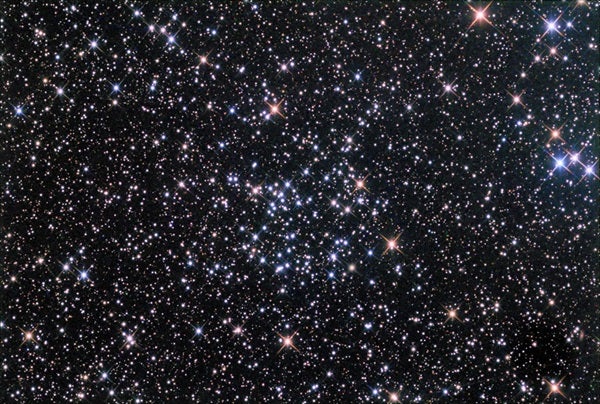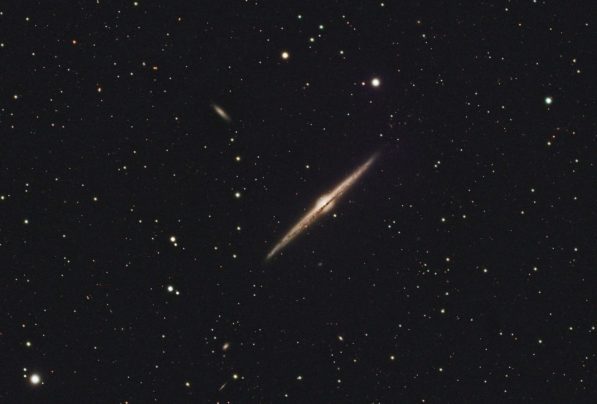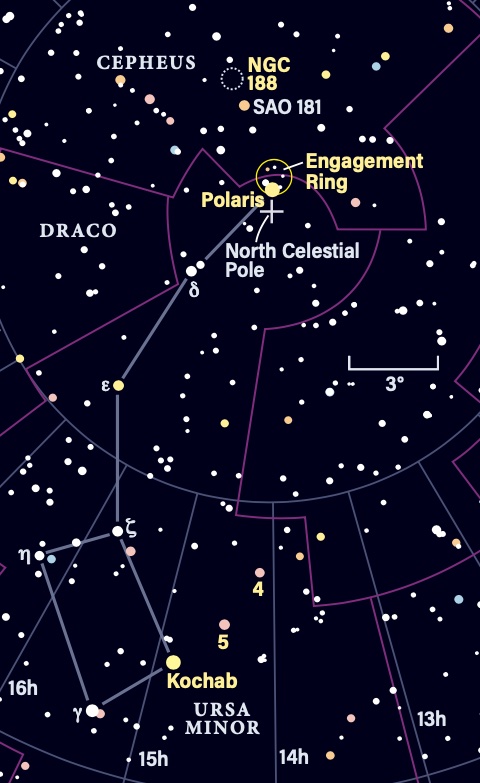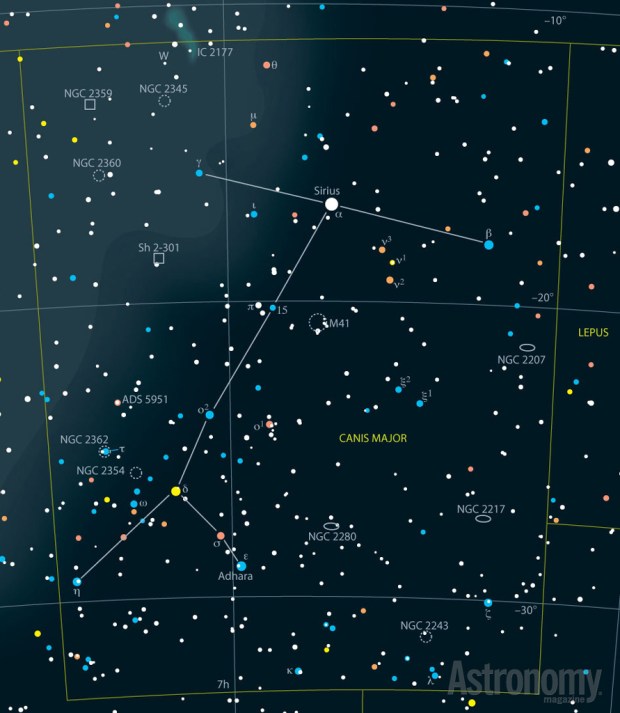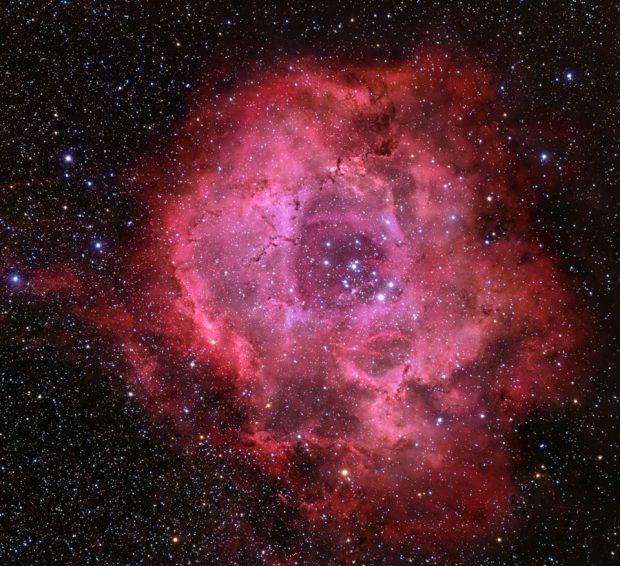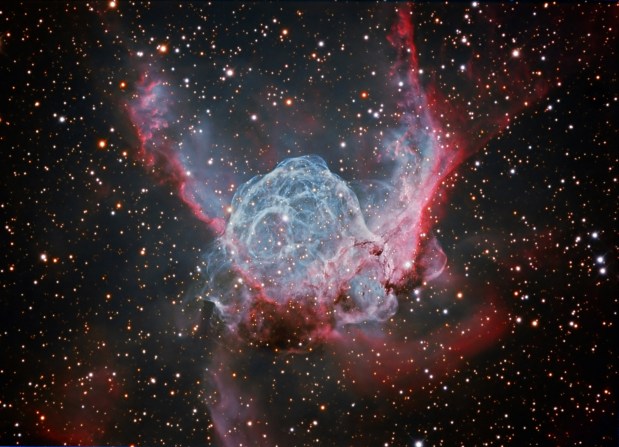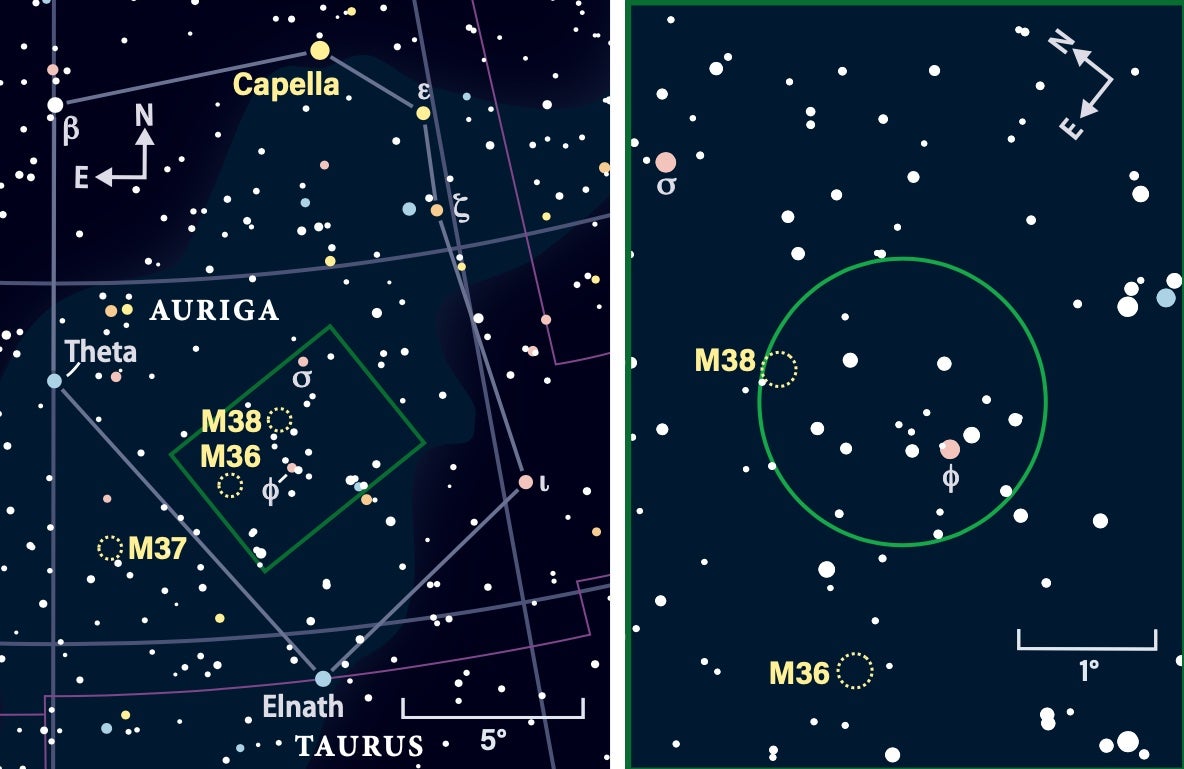I. Detached clusters with strong central concentration.
II. Detached clusters with little central concentration.
III. Detached clusters with no noticeable concentration, in which the stars are more or less thinly but nearly uniformly scattered.
IV. Clusters not well detached but passing gradually into the environs, appearing like a star field condensation (that is, ungrouped into a cluster).
Next, he subdivided each of the four main groups into three types according to the range in the brightness or luminosity of the cluster stars:
1. Most cluster stars nearly of the same apparent brightness.
2. Medium range in star brightnesses.
3. Clusters composed of bright and faint stars; generally a few very bright and some moderately bright stars standing out from a host of fainter ones.
Finally, Trumpler divided clusters based on the number of stars they contained. He thought this was the most important distinction, and designated them by letters:
p. Poor clusters with less than 50 stars.
m. Moderately rich clusters with 50 to 100 stars.
r. Rich clusters containing more than 100 stars.
Here are several more targets that exemplify different Trumpler classes. Observe them and note the characteristics that place each in its Trumpler class, and you’ll be well on your way to understanding the full range of open clusters.
Happy hunting!

